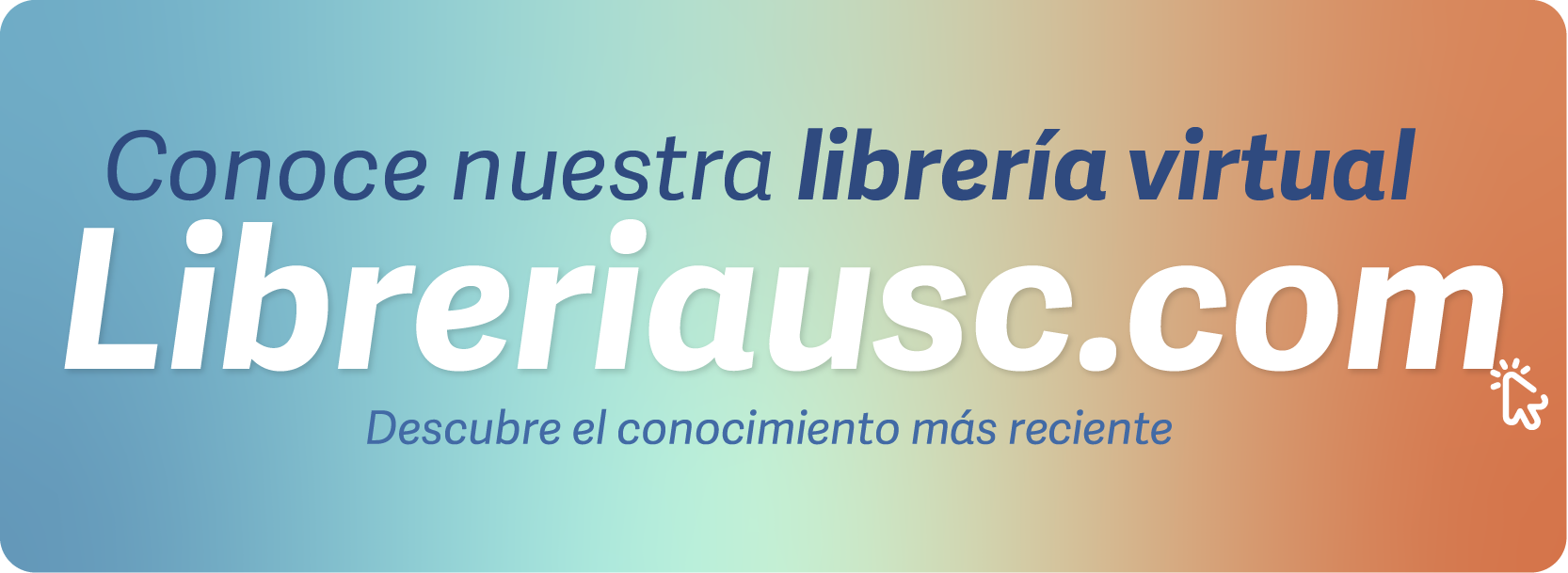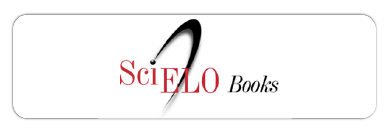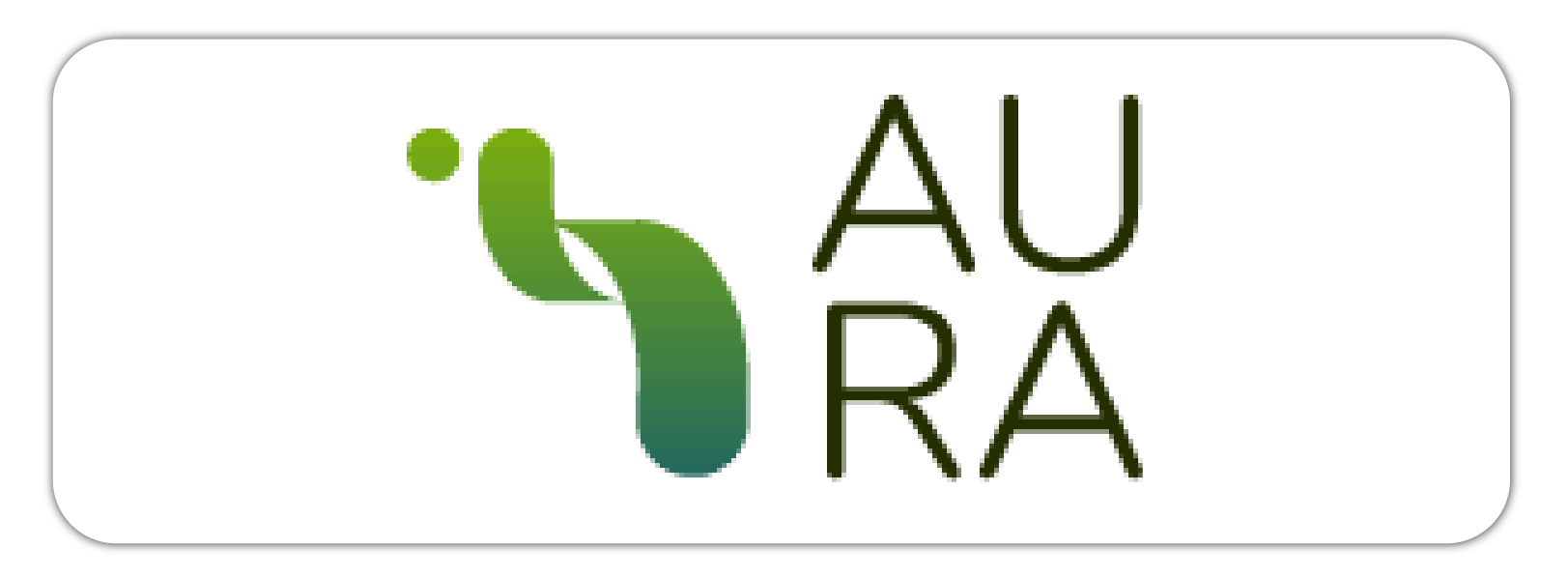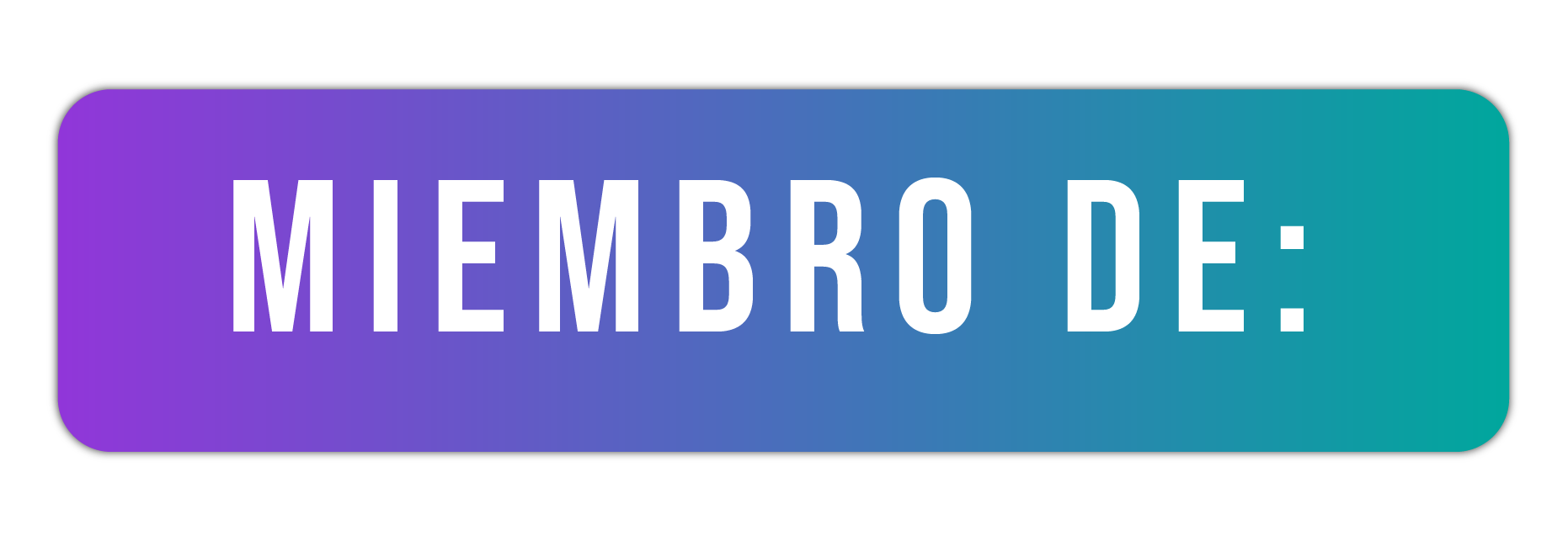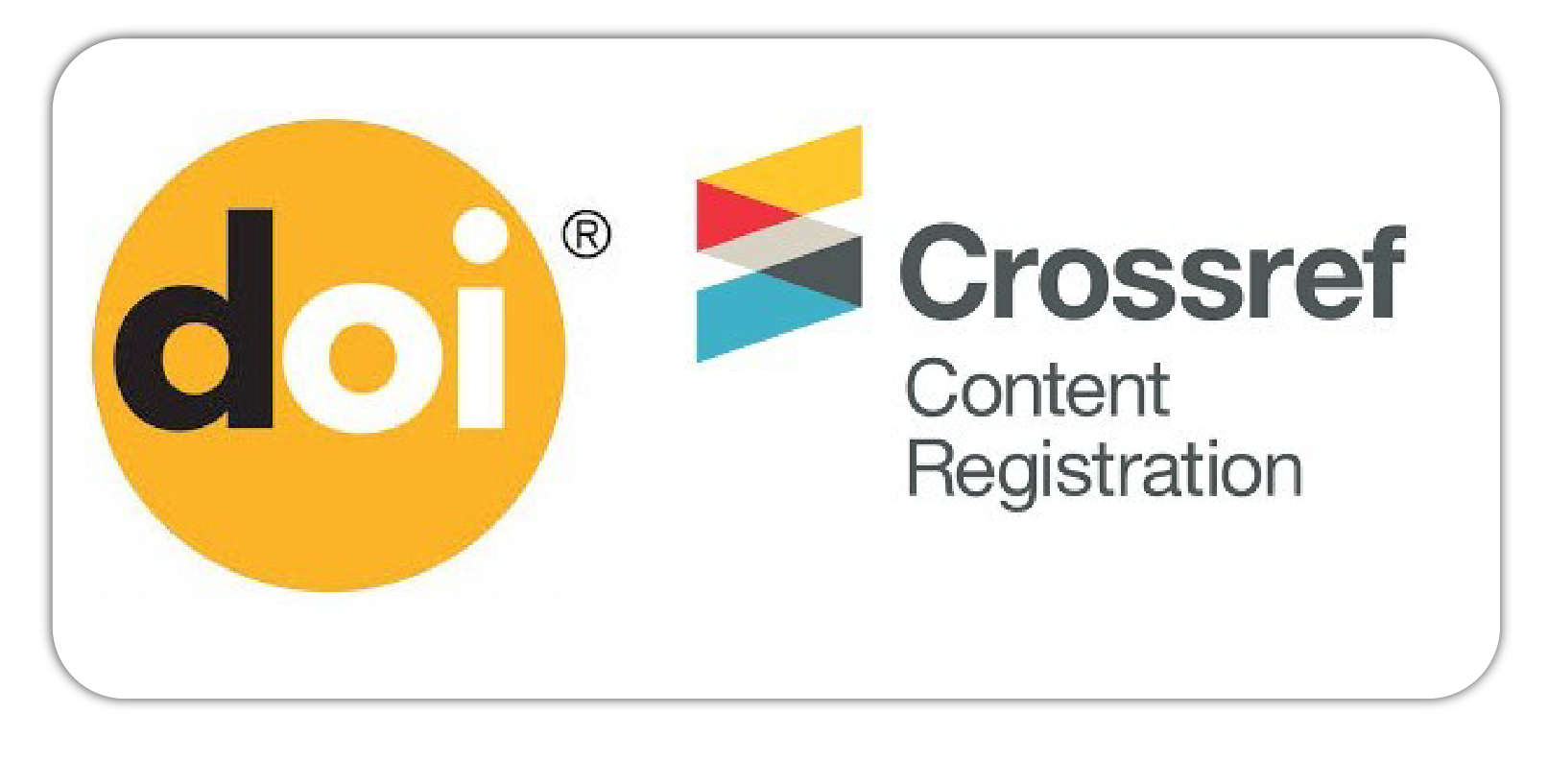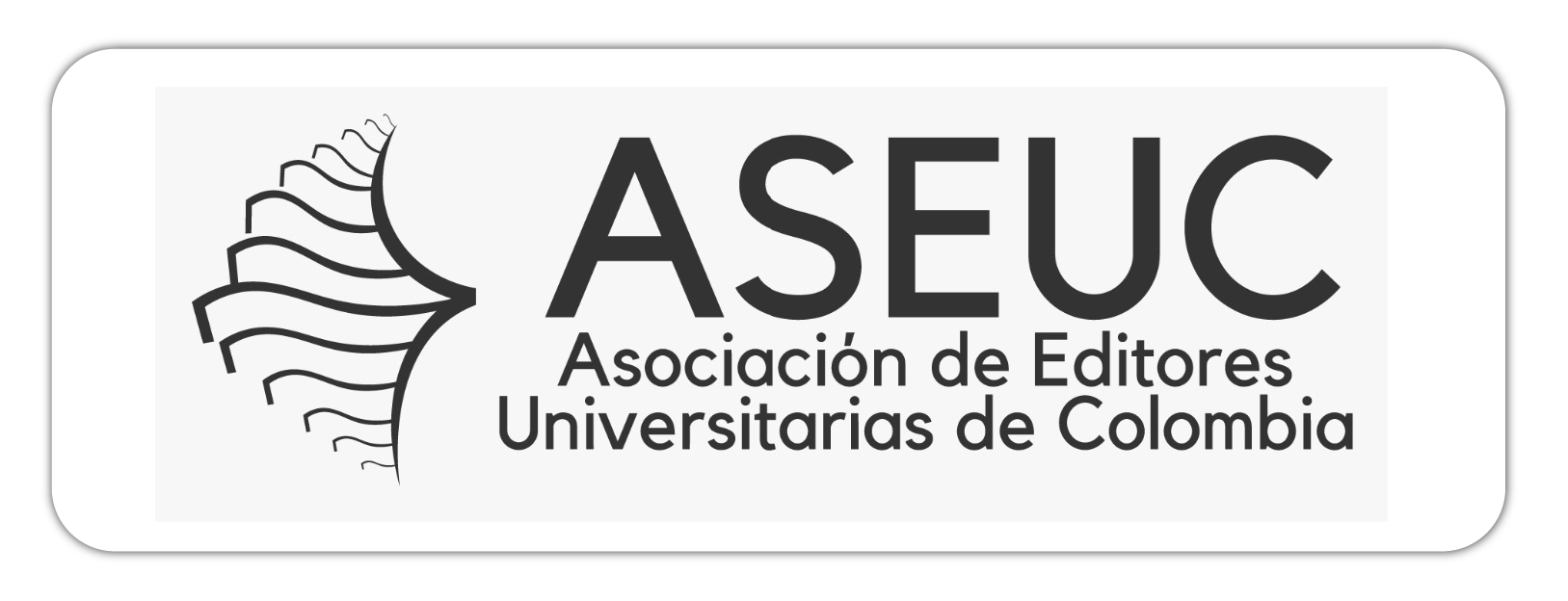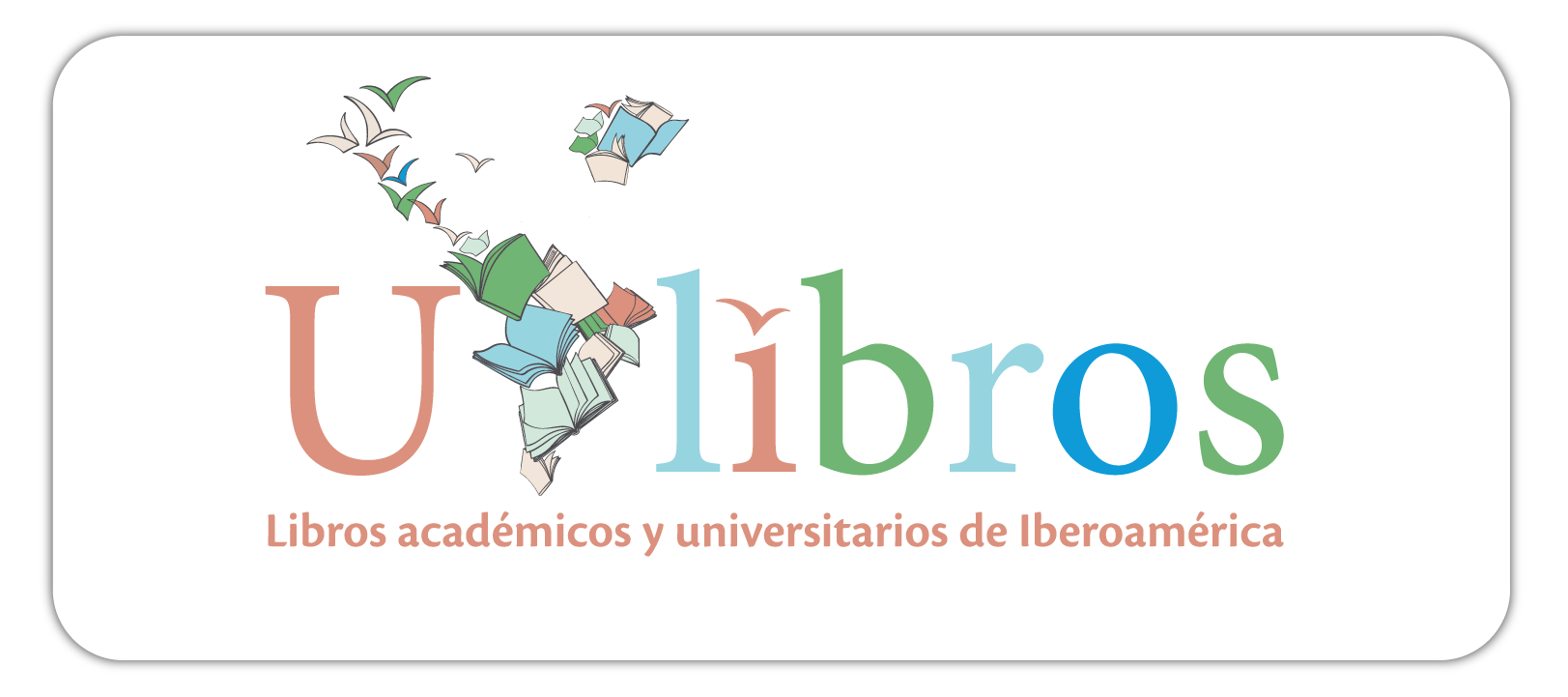Investigación eco-epidemiológica de la plaga caracol gigante africano (L. fulica) y su potencial impacto en la salud ambiental del Valle del Cauca
PlumX
Palabras clave:
Caracol Africano, biodiversidad, Única salud, Comuna, Angiostrongylus, Especie invasora, Manto, EducomunicativaSinopsis
El caracol gigante africano (Lissachatina fulica) se ha consolidado como una de las especies invasoras más problemáticas en los trópicos, debido a su capacidad de adaptación, rápida reproducción y los impactos negativos que genera en los ecosistemas, la agricultura y la salud humana. En el Valle del Cauca, una región de vital importancia ecológica y productiva en Colombia, esta plaga ha encontrado un entorno favorable para su proliferación, convirtiéndose en un desafío para las comunidades y las autoridades locales. El presente trabajo, titulado "Investigación ecoepidemiológica de la plaga caracol gigante africano (L. fulica) y su potencial impacto en la salud ambiental del Valle del Cauca", representa un esfuerzo interdisciplinario para comprender y abordar las complejas dinámicas que rodean esta problemática. Su enfoque no solo explora los aspectos biológicos y ecológicos del caracol gigante africano, sino también las implicaciones epidemiológicas derivadas de su capacidad para ser vector de patógenos que afectan tanto a la fauna silvestre como a las poblaciones humanas. A lo largo de este libro, se integran análisis de su ecología, distribución geoespacial, patógenos asociados y estrategias educomunicativa para desarrollar una visión integral de la situación. Esta perspectiva permite no solo diagnosticar el alcance de la plaga y su impacto, sino también proponer soluciones viables y sostenibles que puedan ser adoptadas por las comunidades afectadas y las instituciones gubernamentales.
Capítulos
-
Historia natural y aspectos ecológicos del caracol gigante africano (Lissachatina fulica)
-
Distribución geoespacial del caracol gigante africano (l. fulica) vs Angiostrongylus s.p en el distrito especial de Santiago de Cali
-
Implementación de la Técnica de PCR Múltiple en Tiempo Real para la detección de Angiostrongylus en nódulos del manto de Caracoles Africanos
-
Las estrategias educomunicativas como mecanismos para la divulgación científica de las condiciones eco-epidemiológicas de la plaga caracol gigante africano (L. fulica) en el Valle del Cauca
Descargas
Citas
Albuquerque, F. S., Peso-Aguiar, M. C., & Assuncao-Albuquerque, M. J. T. (2008). Distribution, feeding behavior and control strategies of the exotic land snail Achatina fulica (Gastropoda: Pulmonata) in the northeast of Brazil. Brazilian Journal of Biology, 68, 837–842.
Aquino, M. (2010). Achatina fulica in Brazil. REDVET, 11(9), 091010 ref. 7.
Ardila, M. L. V. (2008). Lista de los géneros de moluscos terrestres de Colombia (Mollusca: Gastropoda: Prosobranchia: Mesogastropoda y Pulmonata: Stylommatophora). Biota Colombiana, 9(1), 39–62.
Badii, M. H., & Landeros, J. (2007). Invasión de especies o el tercer jinete de Apocalipsis ambiental. Daena, 2(1), 39–53.
Bhattacharyya, B., Das, M., Mishra, H., Nath, D. J., & Bhagawati, S. (2014). Bioecology and management of giant African snail, Achatina fulica (Bowdich). International Journal of Plant Protection, 7(2), 476–481.
Burkett-Cadena, N. D., & Unnasch, T. R. (2013, November 10–13). Apple snails and tiger mosquitoes: A curious association between two invasive species in Florida, USA. Paper presented at Entomology 2013, 61st Annual Meeting of the Entomological Society of America, Austin, Texas. https://esa.confex.com/esa/2013/webprogram/Session20756.html
Cano-Pérez, E., Torres-Pacheco, J., Barraza-Quiroz, L., Morelos-Muñoz, J., & Gómez-Camargo, D. (2021). Population characterization and parasitological assessment of the giant African snail (Achatina fulica) in urban areas of Cartagena, Colombia. F1000Research, 10. https://doi.org/10.12688/f1000research.28829.1
Correoso-Rodríguez, M. (2006). Estrategia preliminar para evaluar y erradicar Achatina fulica (Gastropoda: Achatinaceae) en Ecuador. Boletín Técnico, Serie Zoológica, 6(2).
da Silva, G. M., Thiengo, S. C., de Sousa, A. K. P., Madi, R. R., de Melo, C. M., Gomes, S. R., & Jeraldo, V. L. S. (2024). Nematodes of concern to public and animal health associated with the invasive snail Achatina fulica, in Sergipe, Northeastern Brazil. Veterinary Parasitology: Regional Studies and Reports, 54, 101096.
Darrigran, G., Agudo-Padrón, I., Baez, P., Belz, C., Cardoso, F., Carranza, A., ... & Damborenea, C. (2020). Non-native mollusks throughout South America: Emergent patterns in an understudied continent. Biological Invasions, 22, 853–871.
De La Ossa-Lacayo, A., De La Ossa, J., & Lasso, C. A. (2012). Registro del caracol africano gigante Achatina fulica (Bowdich 1822) (Mollusca: Gastropoda-Achatinidae) en Sincelejo, costa Caribe de Colombia. Biota Colombiana, 13(2).
Fontanilla, I. K. C. (2010). Achatina (Lissachatina) fulica Bowdich: Its molecular phylogeny, genetic variation in global populations, and its possible role in the spread of the rat lungworm Angiostrongylus cantonensis (Chen) (PhD thesis). University of Nottingham. https://www.molluscabase.org/aphia.php?p=sourcedetails&id=237986
Giraldo, A., Bolívar-García, W., Cantera, J., Restrepo, M. G., Colorado, A. G., Gómez, M., ... & Garzón, C. G. (2017). Aspectos generales de la historia natural del caracol gigante africano (Achatina fulica Bowdich, 1822) en el Valle del Cauca. Innovaciencia, 5(1 S1), 3–4.
Giraldo, A., Patiño, A., Lozano, R., & Garcés, M. F. (2022). Distribución potencial del caracol gigante africano (Achatina fulica Bowdich 1822) en Colombia. Boletín Científico. Centro de Museos. Museo de Historia Natural, 26(2), 261–273.
Godan, D. (1983). Pests slugs and snails. Springer-Verlag.
Ilarri, M. I., Amorim, L., Souza, A. T., & Sousa, R. (2018). Physical legacy of freshwater bivalves: Effects of habitat complexity on the taxonomical and functional diversity of invertebrates. Science of the Total Environment, 634, 1398–1405.
Incani, R. N., Caleiras, E., Martín, M., & González, C. (2007). Human infection by Angiostrongylus costaricensis in Venezuela: First report of a confirmed case. Revista do Instituto de Medicina Tropical de São Paulo, 49, 197–200.
Linares, M. S., Macedo, D. R., Massara, R. L., & Callisto, M. (2020). Why are they here? Local variables explain the distribution of invasive mollusk species in neotropical hydropower reservoirs. Ecological Indicators, 117, 106674.
Lowe, S., Browne, M., Boudjelas, S., & De Poorter, M. (2000). 100 of the world’s worst invasive alien species: A selection from the global invasive species database. The Invasive Species Specialist Group (ISSG).
Mangudo, C., Campos, R. E., Rossi, G. C., & Gleiser, R. M. (2017). Snail shells as larval habitat of Limatus durhamii (Diptera: Culicidae) in the Yungas of Argentina. Acta Tropica, 167, 204–207. https://doi.org/10.1016/j.actatropica.2016.12.036
MAVDT. (2008). Resolución Número 0848 del 23 de mayo de 2008. Ministerio de Ambiente, Vivienda y Desarrollo Territorial, Colombia.
MAVDT. (2011). Resolución Número 654 de abril 7 2011. Ministerio de Ambiente, Vivienda y Desarrollo Territorial, Colombia.
Naokuni, T., & Teruhisa, O. (1986). Induction of locomotor behavior in the giant African snail, Achatina fulica. Comparative Biochemistry and Physiology Part A: Physiology, 83(1), 77–82.
Ojasti, J. (2001). Estudio sobre el estado actual de las especies exóticas. Biblioteca Digital Andina.
Ogasawara, T., & Tasaki, K. (1982). A circadian locomotor rhythm in the giant land snail, Achatina fulica. The Tohoku Journal of Experimental Medicine, 137(1), 109–110.
Patiño-Montoya, A., & Giraldo, A. (2017). Variación génica intrapoblacional del caracol gigante africano (Achatina fulica) en el Valle del Cauca. Revista MVZ Córdoba, 22(2), 5925–5937.
Patiño Montoya, A., & Giraldo, A. (2020). Diez años del caracol gigante africano en Colombia: Revisión de la investigación y divulgación desarrollada entre 2008–2017. Ecología Austral, 30(1), 125–133.
Patiño-Montoya, A., Murillo-García, O., & Giraldo, A. (2021). Allometry and geographic variation of the morphology of Achatina fulica (Achatinidae) in Colombia. Molluscan Research, 41(1), 57–63.
Patiño?Montoya, A., Giraldo, A., & Tidon, R. (2022). Effect of the invasion history of the giant African snail (Lissachatina fulica) on its realized climatic niche. Invertebrate Biology, 141(4), e12385.
Raut, S. K., & Barker, G. M. (2002). Achatina fulica Bowdich and other Achatinidae as pests in tropical agriculture. In G. M. Barker (Ed.), Molluscs as crop pests (pp. 55–114). CABI Publishing.
Raut, S. K., & Ghose, K. C. (1982). Food preference and feeding behaviour of two pestiferous snails, Achatina fulica Bowdich and Macrochlamys indica Godwin-Austen. Records of the Zoological Survey of India, 421–440.
Rauth, S. K., & Ghara, T. K. (1990). Impact of individual’s size on density of the snail pest Achatina fulica Bowdich (Gastropoda: Achatinidae). Bollettino Malacologico, 25(9–12), 301–306.
Roda, A., Millar, J. G., Jacobsen, C., Veasey, R., Fujimoto, L., Hara, A., & McDonnell, R. J. (2019). A new synthetic lure for management of the invasive giant African snail, Lissachatina fulica. PLOS ONE, 14(10), e0224270.
Santos, A. O. L., Pereira, C. S., Silva, R. M., & Campos Filho, P. C. (2024). Achatina fulica como vector de meningoencefalitis eosinofílica (Angiostrongylus cantonensis) y angiostrongilíase abdominal (A. costaricensis): Distribución, riesgos y estrategias de contención. Cuadernos de Educación y Desarrollo, 16(4), e3922.
Silva, G. M., Thiengo, S. C., Jeraldo, V. S., Rego, M. I. F., Silva, A. B. P., Rodrigues, P. S., & Gomes, S. R. (2022). The invasive giant African land snail, Achatina fulica (Gastropoda: Pulmonata): Global geographical distribution of this species as host of nematodes of medical and veterinary importance. Journal of Helminthology, 96, e86.
Song, Y., Qiu, R., Hu, J., Li, X., Zhang, X., Chen, Y., ... & He, D. (2020). Biodegradation and disintegration of expanded polystyrene by land snails Achatina fulica. Science of the Total Environment, 746, 141289.
Thiengo, S. C., Faraco, F. A., Salgado, N. C., Cowie, R. H., & Fernandez, M. A. (2007). Rapid spread of an invasive snail in South America: The giant African snail, Achatina fulica, in Brasil. Biological Invasions, 9, 693–702.
Tomiyama, K., & Nakane, M. (1993). Dispersal patterns of the giant African snail, Achatina fulica (Ferussac) (Stylommatophora: Achatinidae), equipped with a radio-transmitter. Journal of Molluscan Studies, 59(3), 315–322.
Vinci, G. K., Unnithan, V. K., & Sugunan, V. V. (1988). Farming of the giant African snail, Achatina fulica. Central Inland Capture Fisheries Research Institute.
Weininger-Cohén, D., Suárez-Cedraro, D. C., Yánez-González, R., Suárez-Acevedo, J. A., Abad-Millán, H., Suárez-Sancho, J. A., & Viera-Ramírez, E. R. (2012). Achatina fulica (Bowdich, 1822): Un posible problema de salud pública en Venezuela. Vitae, (52).
Aguilera Arango, G. A., & Ortiz Cabrera, J. C. (2020). Distribución geográfica del caracol gigante africano en predios agrícolas del Valle del Cauca, Colombia. Centro Agrícola, 47(1), 5–12. http://scielo.sld.cu/scielo.php?script=sci_arttext&pid=S0253-57852020000100005&lng=es&tlng=es
Alcaldía de Santiago de Cali. (2023, 20 de julio). El caracol gigante africano. https://www.cali.gov.co/dagma/publicaciones/157868/el-caracol-gigante-africano/
Bejarano, M. (2012). Santiago de Cali. Revista Colombiana de Cirugía, 27(3), 185–187. http://www.scielo.org.co/pdf/rcci/v27n3/v27n3a1.pdf
Cano-Pérez, E., Torres-Pacheco, J., Barraza-Quiroz, L., Morelos-Muñoz, J., & Gómez-Camargo, D. (2021). Population characterization and parasitological assessment of the giant African snail (Achatina fulica) in urban areas of Cartagena, Colombia. F1000Research, 10, 77. https://doi.org/10.12688/f1000research.28002.2
Departamento Administrativo de Gestión del Medio Ambiente [DAGMA]. (2023, 20 de julio). Departamento Administrativo de Gestión del Medio Ambiente. https://www.cali.gov.co/dagma/
Departamento Administrativo de Gestión del Medio Ambiente [DAGMA]. (2024, 23 de octubre). Plataforma Fauna Silvestre. https://tinyurl.com/2d2bherw
Giraldo, A., Bolívar, W., González, A. M., Garcés, M. F., et al. (2014). Caracol africano en el Valle del Cauca: línea base para el Valle del Cauca (19 p.). Grupo de Investigación en Ecología Animal, Universidad del Valle.
Instituto Colombiano Agropecuario [ICA]. (2023, 20 de julio). ICA Comunica. https://www.ica.gov.co/periodico-virtual/prensa/informe-especial-caracol-gigante-africano.aspx
Patiño Montoya, A. (2018). Una década del caracol gigante africano (Achatina fulica) en Colombia: Aportes y desafíos de la academia [Tesis de pregrado, Universidad del Valle].
Patiño-Montoya, A., & Giraldo, A. (2017). Variación génica intrapoblacional del caracol gigante africano (Achatina fulica) en el Valle del Cauca. Revista MVZ Córdoba, 22(2), 5924–5936. https://doi.org/10.21897/rmvz.1028
Roda, A., Yong Cong, M., Donner, B., Dickens, K., Howe, A., Sharma, S., & Smith, T. (2018). Designing a trapping strategy to aid giant African snail (Lissachatina fulica) eradication programs. PLOS ONE, 13(9), e0203572. https://doi.org/10.1371/journal.pone.0203572
Vásquez, E. (2013). Historia del desarrollo histórico y urbano en Cali.
Álava, L. S., Pilozo, C. B., Amador, F. S., Zerna, J. P., Guacho, C. C., Cabrera, F., et al. (2022). Angiostrongylus cantonensis in Achatina fulica in Napo province, Ecuador and the increased risk of angiostrongyliasis. Boletín de Malariología y Salud Ambiental, 62(3), 591–598.
Aekphachaisawat, N., et al. (2022). A national surveillance of eosinophilic meningitis in Thailand. Parasite Epidemiology and Control, 19, e00272.
Barratt, J., et al. (2016). Angiostrongylus cantonensis: A review of its distribution, molecular biology and clinical significance as a human pathogen. Parasitology, 143(9), 1087–1118.
Carvalho, M. S. N., et al. (2022). Epidemiological, clinical and laboratory aspects of Angiostrongylus cantonensis infection: An integrative review. Brazilian Journal of Biology, 82, e262109.
Chen, J. H., et al. (2012). Frontiers of parasitology research in the People’s Republic of China: Infection, diagnosis, protection and surveillance. Parasites & Vectors, 5(1), 221.
Cowie, R. H. (2013). Biology, systematics, life cycle, and distribution of Angiostrongylus cantonensis, the cause of rat lungworm disease. Hawai’i Journal of Medicine & Public Health, 72(6 Suppl 2), 6–9.
da Silva, A. J., & Morassutti, A. L. (2021). Angiostrongylus spp. (Nematoda; Metastrongyloidea) of global public health importance. Research in Veterinary Science, 135, 397–403.
Eamsobhana, P. (2014). Eosinophilic meningitis caused by Angiostrongylus cantonensis – A neglected disease with escalating importance. Tropical Biomedicine, 31(4), 569–578.
Gonzálvez, M., & de Ybáñez, R. R. (2022). What do we know about Angiostrongylus cantonensis in Spain? Current knowledge and future perspectives in a globalized world. Transboundary and Emerging Diseases, 69(5), 3115–3120.
Incani, R. N., Caleiras, E., Martín, M., & González, C. (2007). Human infection by Angiostrongylus costaricensis in Venezuela: First report of a confirmed case. Revista do Instituto de Medicina Tropical de São Paulo, 49(3), 197–200.
Khamsai, S., et al. (2022). Eosinophilic meningitis epidemiological data from a national database in Thailand’s Department of Disease Control: A pragmatic, retrospective analytical study. Orphanet Journal of Rare Diseases, 17(1), 393.
Lv, S., Guo, Y. H., Wei, F. R., Zhang, Y., Xiao, N., & Zhou, X. N. (2020). Control of eosinophilic meningitis caused by Angiostrongylus cantonensis in China. Advances in Parasitology, 110, 269–288.
Mendonça, C. L. G. F., Carvalho, O. S., & Lenzi, H. L. (2002). Angiostrongylus costaricensis life cycle in the intermediate host Sarasinula marginata Semper, 1885 (Mollusca: Soleolifera). Revista da Sociedade Brasileira de Medicina Tropical, 35(2), 199–200.
Mesén-Ramírez, P., Abrahams-Sandí, E., Fernández-Quesada, K., & Morera, P. (2008). Angiostrongylus costaricensis egg antigen for the immunodiagnosis of abdominal angiostrongyliasis. Journal of Helminthology, 82(3), 251–254.
Morgan, E. R., Modrý, D., Paredes-Esquivel, C., Foronda, P., & Traversa, D. (2021). Angiostrongylosis in animals and humans in Europe. Pathogens, 10(10), 1264.
Morchón, R., Montoya-Alonso, J. A., Sánchez-Agudo, J. Á., de Vicente-Bengochea, J., Murcia-Martínez, X., & Carretón, E. (2021). Angiostrongylus vasorum in domestic dogs in Castilla y León, Iberian Peninsula, Spain. Animals, 11(6), 1513.
Mota, E. M., & Lenzi, H. L. (1995). Angiostrongylus costaricensis life cycle: A new proposal. Memórias do Instituto Oswaldo Cruz, 90(6), 707–709.
Pai, T. Y., et al. (2022). Host transmission dynamics of first- and third-stage Angiostrongylus cantonensis larvae in Bullastra lessoni. Parasitology, 149(8), 1034–1044.
Penagos-Tabares, F., Lange, M. K., Chaparro-Gutiérrez, J. J., Taubert, A., & Hermosilla, C. (2018). Angiostrongylus vasorum and Aelurostrongylus abstrusus: Neglected and underestimated parasites in South America. Parasites & Vectors, 11, 208.
Prasidthrathsint, K., Lewis, J., & Couturier, M. R. (2017). Closing the brief case: Angiostrongylus cantonensis eosinophilic meningitis in a returned traveler. Journal of Clinical Microbiology, 55(10), 3147–3148.
Rebello, K. M., et al. (2013). Morphological aspects of Angiostrongylus costaricensis by light and scanning electron microscopy. Acta Tropica, 127(3), 191–198.
Rojas, A., et al. (2021). Abdominal angiostrongyliasis in the Americas: Fifty years since the discovery of a new metastrongylid species, Angiostrongylus costaricensis. Parasites & Vectors, 14, 374.
Solano-Barquero, A., Mora, J., Graeff-Teixeira, C., & Rojas, A. (2021). Angiostrongylus costaricensis. Trends in Parasitology, 37(12), 1111–1112.
Tsai, H. C., et al. (2001). Eosinophilic meningitis caused by Angiostrongylus cantonensis: Report of 17 cases. The American Journal of Medicine, 111(2), 109–114.
Tsai, H. C., Lee, S. S. J., Huang, C. K., Yen, C. M., Chen, E. R., & Liu, Y. C. (2004). Outbreak of eosinophilic meningitis associated with drinking raw vegetable juice in southern Taiwan. The American Journal of Tropical Medicine and Hygiene, 71(2), 222–226.
Turck, H. C., Fox, M. T., & Cowie, R. H. (2022). Paratenic hosts of Angiostrongylus cantonensis and their relation to human neuroangiostrongyliasis globally. One Health, 15, 100426.
Varela-M., R. E., Arias, J. S., & Velásquez, L. E. (2018). Estandarización de una prueba múltiple de reacción en cadena de la polimerasa en tiempo real para la identificación de Angiostrongylus cantonensis, A. costaricensis y A. vasorum. Biomédica, 38(1), 111–119.
Vitta, A., Polseela, R., Nateeworanart, S., & Tattiyapong, M. (2011). Survey of Angiostrongylus cantonensis in rats and giant African land snails in Phitsanulok province, Thailand. Asian Pacific Journal of Tropical Medicine, 4(8), 597–599.
Wang, Q. P., Lai, D. H., Zhu, X. Q., Chen, X. G., & Lun, Z. R. (2008). Human angiostrongyliasis. The Lancet Infectious Diseases, 8(10), 621–630.
Álava, L. F. S., Robles, L. M., Álvarez, H. H., Pérez, J. S., Aroca, J. M., & Rivero, L. R. (2014). Angiostrongylus cantonensis: Un parásito emergente en Ecuador. Revista Cubana de Medicina Tropical, 66(1), Article 1. https://revmedtropical.sld.cu/index.php/medtropical/article/view/4
Beillerot, J., Blanchard-Laville, C., & Mosconi, N. (1998). Relación con el saber (1.a ed.). Paidos Educador. https://es.scribd.com/document/165876970/Beillerot-Blanchard-Saber-y-RelacionCon-El-Saber
Freire, P., & Fiori, E. M. (2022). Pedagogía del oprimido (J. Mellado, Trad.; 3.ª ed.). Siglo Veintiuno Editores.
Garcés-Restrepo, M. F., Patiño-Montoya, A., Gómez-Díaz, M., Giraldo, A., & Bolívar-García, W. (2016). Sustancias alternativas para el control del caracol africano (Achatina fulica) en el Valle del Cauca, Colombia. Biota Colombiana, 17(1), 44–52. https://doi.org/10.21068/c2016v17r01a04
Gifford, R. D., & Chen, A. K. S. (2017). Why aren’t we taking action? Psychological barriers to climate-positive food choices. Climatic Change, 140(2), 165–178.
Giraldo, A., Patiño, A., Lozano, R., & Garcés, M. F. (2022). Distribución potencial del caracol gigante africano (Achatina fulica Bowdich 1822) en Colombia. Boletín Científico Centro de Museos Museo de Historia Natural, 26(2), 261–273. https://doi.org/10.17151/bccm.2022.26.2.13
Kaplun, M. (1998). Una pedagogía de la comunicación (1.a ed., Vol. 1). Ediciones de la Torre.
Lenis Mejía, J. D. (2014). Estrategias y mediaciones pedagógicas. Tensiones y relaciones con el saber escolar. Revista de Educación y Pedagogía, 26(67), 99–113.
Ministerio de Salud y Protección Social. (2018). Marco conceptual y metodológico para el desarrollo de la educación para la salud de las Rutas Integrales de Atención en Salud – RIAS.
Novak, J. D., Ausubel, D. P., & Hanesian, H. (1991). Psicología educativa: Un punto de vista cognoscitivo. Trillas.
Patiño Montoya, A., & Giraldo, A. (2018). Valoración de metodología alternativa para el control del caracol gigante africano (Achatina fulica). Boletín Científico Centro de Museos Museo de Historia Natural, 22(2), 183–192. https://doi.org/10.17151/bccm.2018.22.2.13
Patiño Montoya, A., & Giraldo López, A. (2020). Diez años del caracol gigante africano en Colombia: Revisión de la investigación y divulgación desarrollada entre 2008–2017. Ecología Austral, 30(1), 125–133. https://doi.org/10.25260/EA.20.30.1.0.973
Patiño Montoya, A., Giraldo López, A., & Tidon, R. (2022). Variation in the population density of the Giant African Snail (Lissachatina fulica) in the Neotropical region. Caldasia, 44(3), 627–635. https://doi.org/10.15446/caldasia.v44n3.96508
Patiño Montoya, A., Giraldo Ocampo, S., & Giraldo López, A. (2019). Perception of giant African snail (Achatina fulica) in urban community from Colombia. Revista Facultad Nacional de Agronomía Medellín, 72(1), 8717–8727. https://doi.org/10.15446/rfnam.v72n1.73085
Rendón López, L. M., Escobar Londoño, J. V., Arango Ruiz, Á. de J., Molina Benítez, J. A., Villamil Parodi, T., Valencia Montaña, D. F., Rendón López, L. M., Escobar Londoño, J. V., Arango Ruiz, Á. de J., Molina Benítez, J. A., Villamil Parodi, T., & Valencia Montaña, D. F. (2018). Educación para el desarrollo sostenible: Acercamientos desde una perspectiva colombiana. Producción + Limpia, 13(2), 133–149. https://doi.org/10.22507/pml.v13n2a7
Silva, G. M., Thiengo, S. C., Sierpe Jeraldo, V. L., Rego, M. I. F., Silva, A. B. P., Rodrigues, P. S., & Gomes, S. R. (2022). The invasive giant African land snail, Achatina fulica (Gastropoda: Pulmonata): Global geographical distribution of this species as host of nematodes of medical and veterinary importance. Journal of Helminthology, 96, e86. https://doi.org/10.1017/S0022149X22000761
Silva Liévano, E., & Leguízamo Serna, R. (2011). Incentivar el ecologismo humano desde estrategias de educomunicación. Nodos y Nudos, 3(31). https://doi.org/10.17227/01224328.934
Varela-M, R. E., Arias, J. S., & Velásquez, L. E. (2018). Standardization of a multiplex real-time PCR test for the identification of Angiostrongylus cantonensis, A. costaricensis and A. vasorum. Biomédica, 38(1), 111–119. https://doi.org/10.7705/biomedica.v38i0.3407
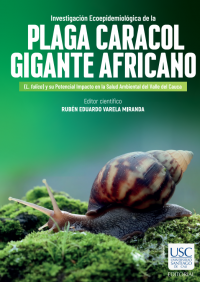


 ruben.varela00@usc.edu.co
ruben.varela00@usc.edu.co
